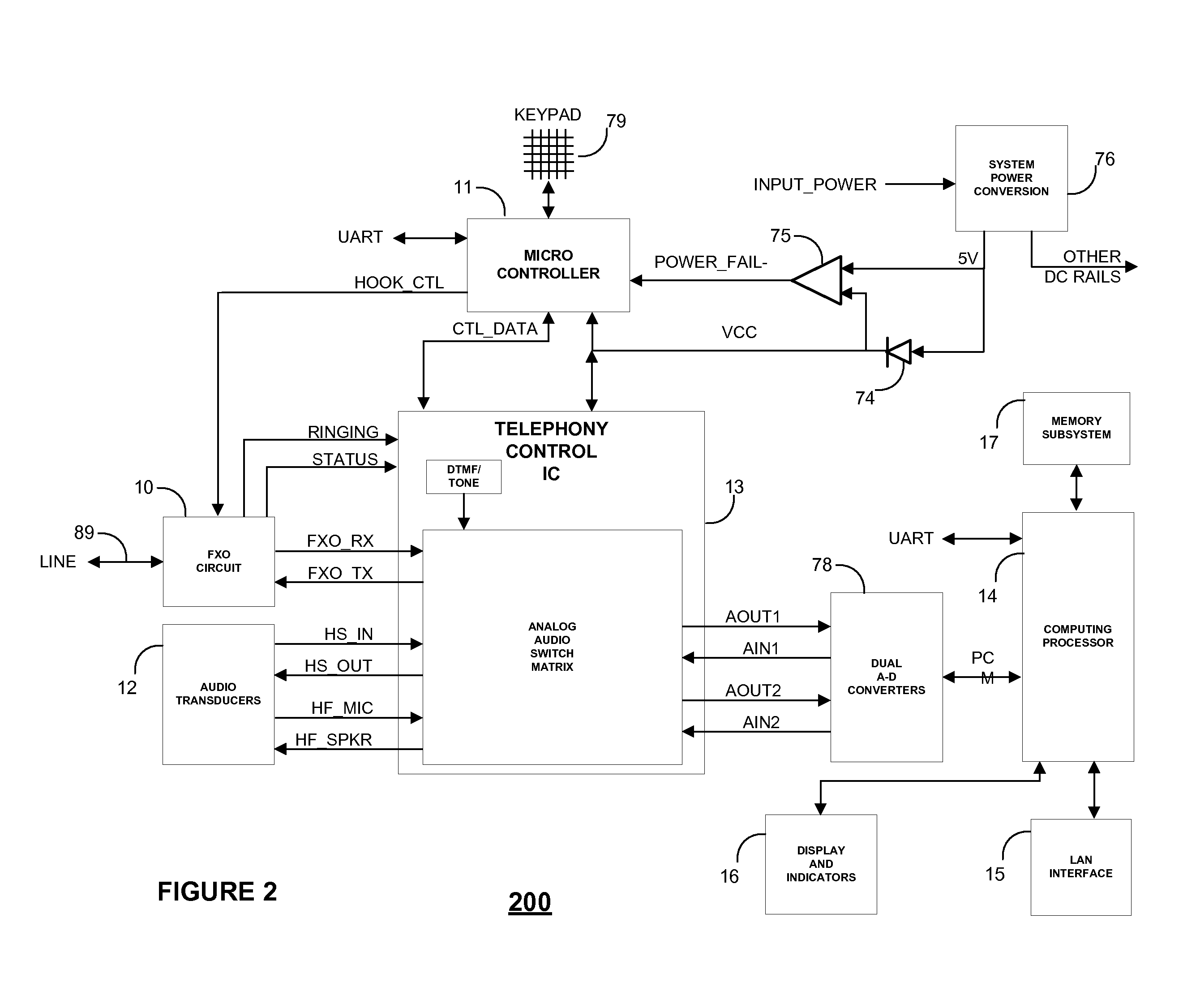Server-less telephone system and methods of operation
- Summary
- Abstract
- Description
- Claims
- Application Information
AI Technical Summary
Benefits of technology
Problems solved by technology
Method used
Image
Examples
Embodiment Construction
[0064] With reference to the Figures a telephone system is described, the system including a plurality of telephony devices (preferably a packet telephony device), whereby there is no centralized call functionality controlling the operation of the telephone system. Each telephony device has embedded intelligence enabling each telephony device to discover other like telephony devices on a network and to self-organize into a fully functional and advanced telephone system. Generally, telephony devices that reside on the same local network domain are referred to herein as local peers, and those telephony devices that reside on remote network domains are referred to herein as remote peers.
[0065] In addition, a multi-site telephone system is described that can bridge across multiple network domains via an enterprise's existing VPN network, or that can be bridged by simple SIP proxy servers that are present in the network. The SIP proxy servers may be already deployed by the enterprise, o...
PUM
 Login to View More
Login to View More Abstract
Description
Claims
Application Information
 Login to View More
Login to View More - R&D
- Intellectual Property
- Life Sciences
- Materials
- Tech Scout
- Unparalleled Data Quality
- Higher Quality Content
- 60% Fewer Hallucinations
Browse by: Latest US Patents, China's latest patents, Technical Efficacy Thesaurus, Application Domain, Technology Topic, Popular Technical Reports.
© 2025 PatSnap. All rights reserved.Legal|Privacy policy|Modern Slavery Act Transparency Statement|Sitemap|About US| Contact US: help@patsnap.com



